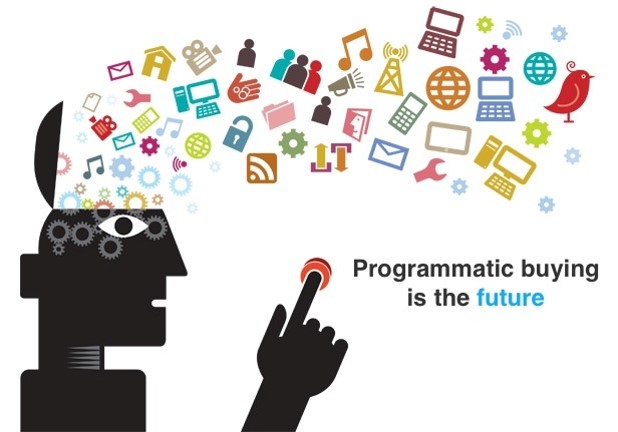Programmatic buying is a term that is becoming very popular now days among professionals eCommerce. It is also called Real Time Bidding (RTB) and is a type of buying and selling online advertising in real time. The reason for its current success and potential impact is that it allows qualified users, in the right place at the right time, which exponentially increases the chances of conversion (sales).
This process of buying and selling advertising, which is done automatically, it has become very popular since its inception in 2008, becoming the best solution to meet the needs of all participants in the world of digital advertising, which are the following:
Agents Buyers
Advertiser: is the individual or interested in spreading their ads through Internet brand. In addition, it is responsible for establishing the budget that will be used in the advertising campaign, determine the target to which it is addressed and provide the necessary creative. If we refer strictly to programmatic buying, it is the one who sets the price of the minimum bid you are willing to pay for your ad to appear on a certain website. Involved in the process directly, through an agency or dealing with the SSPs (Supply Side Platform), of which more later.
Media Agency: is the intermediary in charge of buying advertising space for advertisers, their customers, with whom it has signed a preliminary contract. These will move the goals they want and a budget determined that the agency can invest in those DSPs (Demand Site Platform), networks, Ad Exchanges … they consider most effective to achieve the success of the campaign.
Trading Desk: is the team working in a media agency or advertising department of any advertiser that has high-tech DSPs.
DSPs (Demand Site Platform): is the technology that enables bid both advertisers and agencies to purchase inventory (ad slots) in different Ad Exchanges. They do this using data from the hearing destination website, so the purchase is printing makes printing, a process known as RTB (Real Time Bidding) by occur in real time. These DSPs provide knowledge and technology with the aim of providing a centralized, value each of the impressions and integrate data collected for further analysis.
Related articles: Anticipating The Market
Ad Exchanges
They are meeting points between supply and demand for advertising space, open markets where commercial transactions for buying and selling are done. However, they do not take part in the property inventory. If we land the term to plain language, we could say that is the most similar to an auction house which give a certain impression to the buyer (seller) offering the best price. They are of two types:
Open: it is public, without restrictions, for both buyers and sellers.
Private: it intends to take strict control of supply and demand, so it is limited to a few buyers and sellers, who have been invited to the platform.
Agents Vendors Programmatic Buying
Publisher: also called support or editor, is one that has advertising space and want to sell. But how does it? You can do this in three ways:
Anonymous: it not offered any information about printing, so that the advertiser must be guided by the context or subject of the page that will host your ad.
Branded: it shows the URL where the ad will appear.
Semitransparent: prints are presented with the name of your publisher accordingly.
Ad Network: is a group of small and medium publishers coming together to achieve greater bargaining power. It can also act as a buyer of impressions on the Ad Exchange, acting as buyer and seller at the same time.
SSP (Supply Side Platform): is a type of technology that help publishers and advertising to optimize the performance of your inventory automatically, so that they can access multiple sources of demand (Trading Desks, Ad Exchanges, DSPs networks …) that exist. Specifically, they provide them with data and tools for marketers to better target their offer price.
Related articles: Amazon Ambition Has No Limit
Data Providers
Data suppliers: they are data collectors and processors that enable advertisers to know the interest a particular impression of a campaign, with the information in hand, make your bid. This also can make it a publisher, but in reverse, to establish the selling price of your advertising space.
DMP (Data Management Platform): is a technology platform to integrate and manage large amounts of data from both structured and unstructured. What makes the DMP is to collect audience data from any source and sort them, make sense and determine which are relevant and which are not. The sources cited can be of two types:
1st party data: data collected from own sources of the advertiser (web, mobile, email remarketing, display actions …).
3rd party data: data collected from external sources poster generally provided by suppliers data (gender, age, geographic location, gender, interests …).
Ad Verification
Companies that have a technology that prevents ads from appearing on unsavory websites, such as illegal downloading sites, adult content or promote discrimination or violence. How do they do that? Connecting a pixel with the ad server of the advertiser, agency, publisher or advertising network. This pixel parses the URL, the title tag and page content in real time, blocking the ad view if you are in an area classified as “not recommended” page.
The union of these elements results in a fast, easy and convenient process, as it is 100% automatic, and ensures that the audience you’ll get with our ads is most similar to our “Buyer Persona” (fictional prototype our client’s ideal). It is certainly essential to assess programmatic buying as a practice more traffic acquisition.





